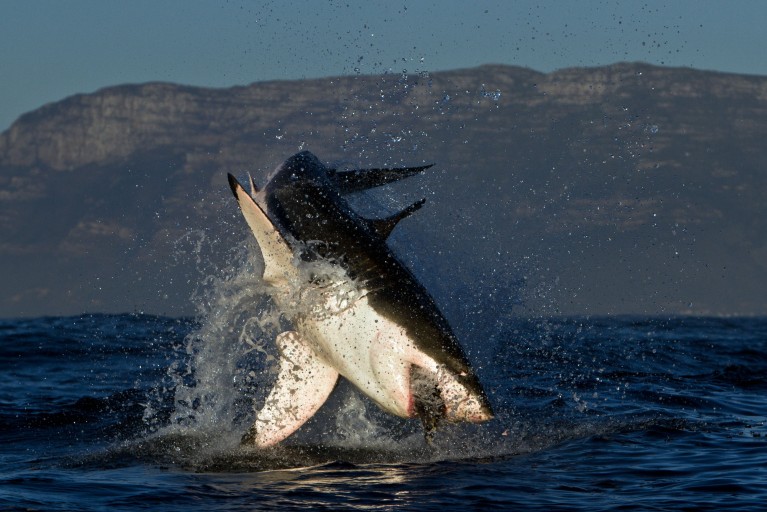
Evidence of killer whales predating on white sharksCredit: Morne Hardenberg
Marine biologists have long been aware that two major predators of the deep often clash, but until recently lacked useful video evidence of it. A study, published in The Ecological Society of America’s journal Ecology, for the first time allows scientists to see in significant detail how killer whales hunt sharks.
The team of South African scientists used a helicopter and a drone to capture the first ever aerial footage of orcas hunting and killing great white sharks in South Africa. Although there has been footage captured of orcas hunting white sharks near the Farallon Islands, California, in 1997, and off the Neptune Islands in Southern Australia, neither are detailed.“It is challenging to document these predations because observing them is so rare,” study co-author Alison Towner, a PhD candidate at Rhodes University, South Africa, tells Nature Africa.
Towner’s drone footage, shows a group of orcas approach a shark, circling closely. “Instead of flying (fleeing and swimming quickly away from the orcas) as one would expect, the white sharks employed a common anti-predator strategy, staying close and keeping an eye on the predator to try and avoid it,” she says.
Previous research on white shark carcasses that have washed ashore show that the orcas only extracted and ate the shark’s liver, which can be up to a third of its body weight, and are full of nutritional lipids.
One of the whales in the study was known to have attacked white sharks before, but the other four were not, suggesting that hunting was becoming more common. Earlier research shows orcas can learn from one another through “cultural transmission.”
Data from tags, drone surveys and shark tour boats show that after the Orca attacks, the surviving sharks left Mossel Bay, in South Africa’s Western Cape province known for its large Great White shark population. Some 45 days later, a few sharks returned, but, after the study was published, the Orcas were seen in Mossel Bay waters again, and sharks left again.
The researchers documented 11 Great White deaths from Orcas, but Alison Kock, study co-author and marine biologist for South African National Parks, says the actual number is probably higher because the shark’s bodies typically sink and don’t wash ashore.
Gansbaai, a fishing village around 300km West of Mossel Bay, is also known for its large white shark population. In a study published in June, the researchers also monitored this area and saw the absence of the sharks became longer after each time the Orcas hunted them. Kock says a smaller predator and prey to white sharks, the bronze whaler shark, were more conspicuous. Each time the orcas returned; the sharks stayed away longer. Eventually, they were away for periods longer than 12 months, she adds.
Evidence suggests that predation by killer whales on large coastal sharks started in 2015 in South Africa on sevengill cow sharks in False Bay, off Cape Town’s coast, then on white sharks in 2017. Before 2015, Orcas were only known to hunt offshore sharks, like Blue Sharks.
“Most of what white sharks do remains hidden from us, and very few white sharks are tagged in South Africa,” Kock says. Satellite tagging more sharks could help scientists understand the extent to which orcas are threatening the existence of one of the ocean’s most formidable predators.
